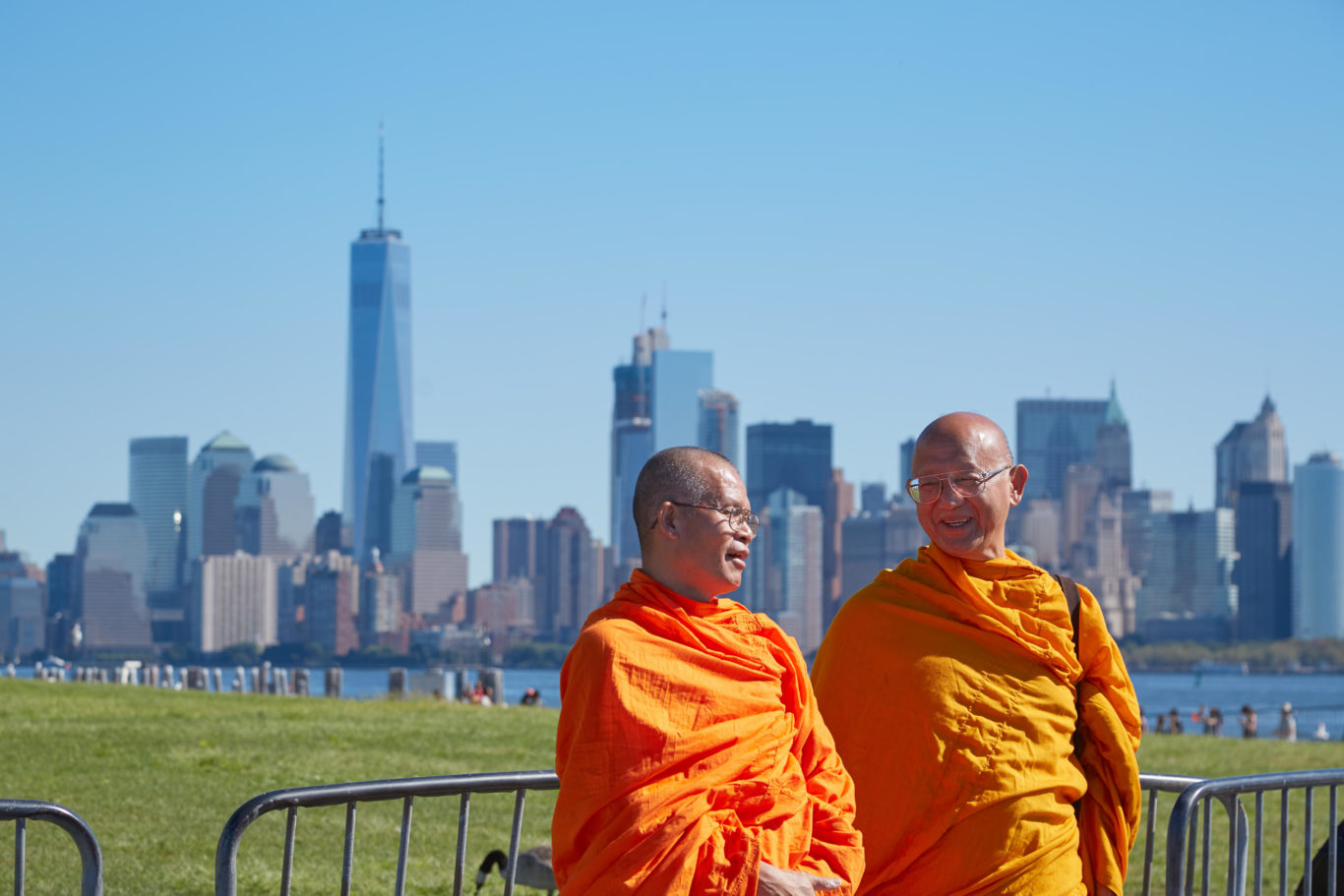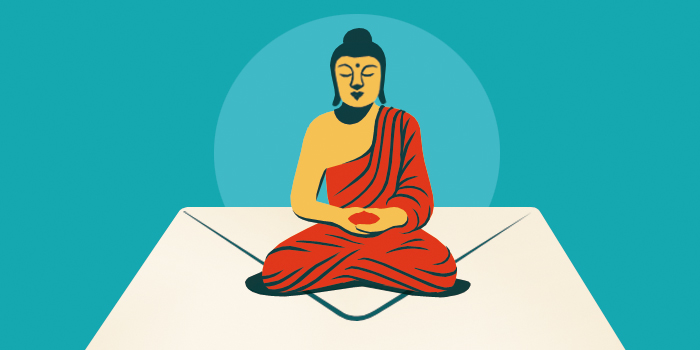Buddhism Comes to America

Two Theravada Buddhist monks converse in front of the New York City skyline. | A. Astes / Alamy Stock Photo
Buddhism first came to North American shores when Chinese immigrants arrived in the mid-19th century. Many were fleeing the Opium Wars ravaging China, and the discovery of gold in California in 1848 created a boom economy that needed workers. The first Buddhist temple in the Western hemisphere, and possibly the first outside of Asia, was built by the Chinese community in San Francisco in 1853.
In the 1880s, Japanese immigrants began coming west also. In 1898, a branch of Jodo Shinshu, a Pure Land school of Japan, sent two missionaries to San Francisco. By the turn of the century Jodo Shinshu priests were opening temples in California and along the West Coast into Canada and Mexico. By the 1930s, most of the other Buddhist schools of Japan had also built at least one temple in North America to serve the growing Japanese American population.
At the same time, non-Asian Westerners took an interest in Buddhism. By the 19th century European scholars living in British colonies in Asia were producing English translations of Asian sacred texts, including Buddhist sutras. These influenced European and American philosophers, including Ralph Waldo Emerson (1803–1882) and Henry David Thoreau (1817–1862). Few writers and translators did more to bring Buddhism to the West than Daisetsu Teitaro Suzuki (1870–1966), who had studied European and Asian languages at Tokyo University. Beginning in the 1920s and 1930s, his books, translations, and (later, in the US) lectures introduced Buddhism, especially Japanese Zen and Pure Land, to a vast audience of non-Asian Western readers including the writer Alan Watts and Beat Generation authors Allen Ginsberg and Jack Kerouac. Their popular and widely read books made Zen a household word in the 1950s and 1960s.
Beginning in the 1960s, the Zen temples already in the US expanded to accommodate a wave of new non-Asian students, and more were built. Soon Americans began to explore many other schools of Buddhism. Today it’s believed that every form of Buddhism found in Asia is represented in the United States―the Theravada Buddhism of southeast Asia; Vietnamese, Chinese, Japanese and Korean Zen and Pure Land schools; the several schools of Tibetan Buddhism; and more, albeit often with practices and rituals adjusted to meet the needs of Western Buddhists. At this point, some temples still primarily serve ethnic Asian populations and others serve non-Asian Western converts, but in other centers this division is fading away.

Tricycle is more than a magazine
Gain access to the best in sprititual film, our growing collection of e-books, and monthly talks, plus our 25-year archive
Subscribe now